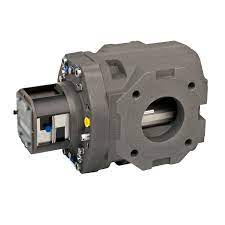One crucial aspect of this safety is the proper use of respiratory protection equipment. However, simply providing workers with masks and respirators is not enough; it is equally important to ensure that the equipment is effective. This is where Respiratory Protective Device (RPD) meters come into play. In this article, we will explore RPD meters, their significance, how they work, and their role in maintaining workplace safety.
What is an RPD Meter?
An RPD meter, which stands for Respiratory Protective Device meter, is a specialized instrument designed to measure the performance and effectiveness of respiratory protection equipment, such as masks, respirators, and self-contained breathing apparatus (SCBA). These devices play a vital role in ensuring that workers are adequately protected against harmful airborne contaminants in various industrial settings.
The Importance of RPD Meters
The significance of RPD meters can be summarized in several key points:
Worker Safety: RPD meters help ensure that respiratory protection equipment functions as intended, thereby safeguarding the health and safety of workers who may be exposed to hazardous materials or environments.
Compliance with Regulations: In many industries, compliance with strict safety regulations is not optional but mandatory. RPD meters aid in verifying compliance with these regulations, which can be essential for avoiding costly fines and legal complications.
Cost Efficiency: Proper maintenance and testing of respiratory protection devices are cost-effective in the long run. It prevents unnecessary expenditures on ineffective equipment and ensures that the workplace remains safe and productive.
Peace of Mind: Employers and employees alike can have peace of mind knowing that the respiratory protection equipment they rely on is in good working condition.
How RPD Meters Work
RPD meters operate by assessing various aspects of respiratory protection equipment, including fit, seal, and filter efficiency. Here’s an overview of how they work:
Fit Testing: One of the primary functions of RPD meters is to conduct fit testing for masks and respirators. Fit testing ensures that the device forms a tight seal against the wearer’s face, preventing the entry of contaminants. There are two common methods of fit testing:
a. Qualitative Fit Testing: This method relies on the wearer’s subjective response to the test agent (often a bitter or sweet solution) to determine whether the mask provides a proper seal.
b. Quantitative Fit Testing: Quantitative fit testing uses objective measurements to assess mask fit. This method is more accurate and is often preferred in industrial settings.
Leakage Testing: RPD meters can assess the level of leakage around the mask or respirator, helping to identify any gaps that may compromise its protective capability. Leakage testing is critical to ensuring that contaminants do not enter the mask’s breathing space.
Filter Efficiency Testing: RPD meters can also evaluate the efficiency of the filters within respiratory protection equipment. This is important in situations where airborne particles or gases need to be filtered out effectively.
Pressure Testing: Some RPD meters measure the pressure drop across the filter, which can indicate the filter’s condition and efficiency.
Types of RPD Meters
There are several types of RPD meters available, each with its own specific functions and capabilities. The most common types include:
Qualitative Fit Testers: These testers are often used for fit testing and rely on the wearer’s response to test agents, like Bitrex or Saccharin, to determine mask seal effectiveness.
Quantitative Fit Testers: Quantitative testers use specialized equipment to measure the concentration of ambient particles both inside and outside the mask. This objective measurement provides a more accurate assessment of mask fit.
Particle Counters: These RPD meters measure the concentration of particles within the mask during fit testing, providing a quantitative assessment of mask seal quality.
Gas and Vapor Analyzers: These meters are used to assess the efficiency of filters for gas and vapor masks, ensuring that the filters can effectively remove harmful contaminants.
Pressure Drop Testers: Pressure drop testers assess the resistance to airflow created by filters and filter cartridges. This can help determine the condition of the filter.
The Role of RPD Meters in Workplace Safety
RPD meters are instrumental in maintaining workplace safety, especially in industries where exposure to hazardous substances or environments is a daily concern. Here are some key ways in which RPD meters contribute to safety:
Ensuring Proper Equipment Selection: RPD meters help in selecting the appropriate respiratory protection equipment for specific job tasks and hazardous materials, ensuring that workers have the right protection.
Regular Maintenance: RPD meters aid in the regular inspection and maintenance of masks and respirators, ensuring they remain in good working condition.
Training and Education: RPD meters are used during fit testing and training sessions to educate workers on the proper use of respiratory protection equipment.
Regulatory Compliance: Many safety regulations require fit testing and periodic assessments of respiratory protection equipment. RPD meters help employers adhere to these standards.
Early Detection of Equipment Issues: RPD meters can identify problems with masks and respirators before they become critical, allowing for timely repairs or replacements.
Conclusion
RPD meters are an indispensable tool for maintaining workplace safety and ensuring the effectiveness of respiratory protection equipment. By conducting fit tests, assessing filter efficiency, and detecting leakage, these meters play a pivotal role in safeguarding the health and well-being of workers in environments where exposure to hazardous materials is a daily concern. Employers and employees alike can have peace of mind, knowing that the respiratory protection equipment they rely on has been rigorously tested and is up to the task of protecting them from harmful contaminants. In the quest for safety, RPD meters are an essential ally, helping us breathe easier in hazardous work environments.




